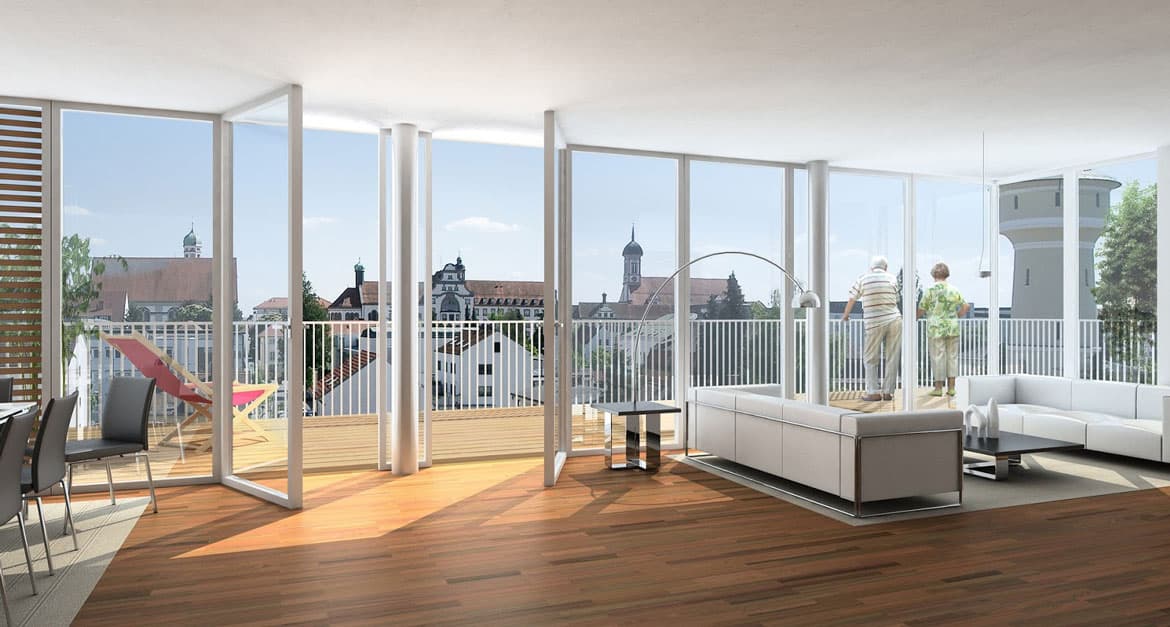LEED Certification: Why Better Air Distribution Lowers Environmental Impact & Costs
Shifting to green buildings is not only a significant way to support the environment, it ’s also a proven and increasingly-adopted method of building...
Floor, wall and ceiling mounted to meet your unique project design.
3 min read
Joe Hullebusch : Mar 19, 2018 12:00:00 AM

Today, the impact buildings have on the environment and human health are driving innovation in building design and construction. There is a strong emphasis on supporting human health and well-being, which not only runs in tandem with reducing long-term costs but also on supporting the planet. The WELL Building Standard is at the forefront of this shift, providing a clear framework of how to incorporate and optimize green solutions to achieve key benefits for the planet and for human well-being. Improving Indoor Air Quality (IAQ) is essential to realizing these benefits.
The WELL Building Standard was designed by Delos in 2012 as the first independent standard for measuring if a building best supports the health and well-being of its occupants. Delos formally launched the WELL Building Standard in 2014 as a score-based system for both measuring and certifying a building for how it impacts human health and well-being, with factors affecting IAQ being at the center of its assessment.
Delos states that WELL “marries best practices in design and construction with evidence-based medical and scientific research”. In 2013, Delos formed the International WELL Building Institute (IWBI) to manage the WELL Building Standard.
Today, 20 million square feet of commercial, residential and institutional real-estate has been WELL Certified. According to the IWBI, 751 projects involving 141 million square feet in space in 32 countries are applying for certification under the WELL Building Standard.
Like the Leadership in Energy and Environmental Design (LEED) certification, Green Business Certification Inc. (GBCI) is responsible for administering evaluation and certification of the WELL Building Standard. The GBCI is an independent, third-party entity.
The WELL Certification process exclusively assesses a space’s impact on its occupants’ health and wellness, examining areas such a building’s impacts on air quality, air distribution and internal noise, among other factors. The IWBI requires the applicant to “integrate human health and well-being at the heart of building design, construction, and operations.”
The WELL Certification process involves five major steps:
There are three WELL Certification levels: Silver, Gold, and Platinum, which can be had for a minimum of five, seven and nine points, respectively.
To qualify for Silver, the applicant must adhere to WELL Preconditions, and the subsequent levels are awarded based on the level of optimization and improvement in the space. Issues relating to air distribution systems, ventilation, and other air quality factors have the most precertification (12) and optimization requirements (17). Improving in these areas will have significant impacts on your occupant well-being and, in turn, your WELL score.
Before registering with the IWBI, it’s important to determine how you intend to position your building for WELL Certification. As noted earlier, there are a total of 12 required areas and 17 opportunities for optimization in terms of IAQ, these will affect your WELL score the most.
For example, air ventilation effectiveness is a requirement, so ensuring that you use an underfloor air distribution (UFAD) system would be prudent as UFAD offers demonstrably improved air distribution, ventilation, and noise reduction. In addition to IAQ, UFAD also readily fulfills WELL requirements in occupant comfort.
Improving occupant health, especially through improved IAQ, will also enable you to accrue long-term cost-savings, not least from lower energy-usage but reduced personnel costs (such as health, medical and productivity losses) as well.
However, while aiming for WELL Certification is great, it is important to ensure that your IAQ project is properly designed and implemented, so as to guarantee that your building is truly efficient and comfortable. For example, a poorly designed UFAD system can adversely impact your IAQ, which in turn affects your score in the WELL Certification process. Contact us today to begin preparing your project for meeting the IAQ requirements of WELL Certification.

Shifting to green buildings is not only a significant way to support the environment, it ’s also a proven and increasingly-adopted method of building...
Casinos face a major challenge with air quality and energy inefficiency risks, notably in terms of electricity and water consumption.
Getting a green building designation is quickly becoming a must-have for developers. The benefits of sustainable development are clear, ranging from...